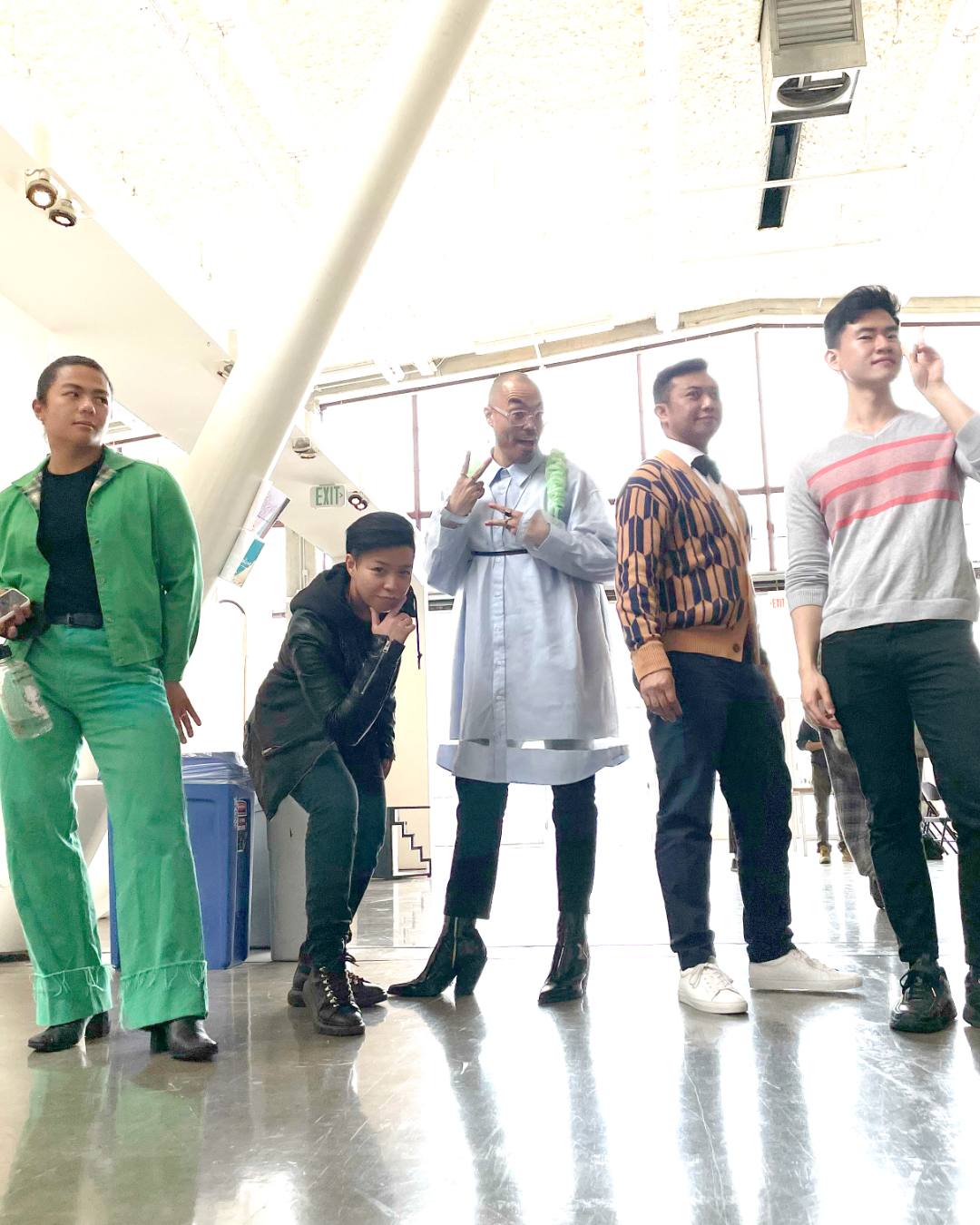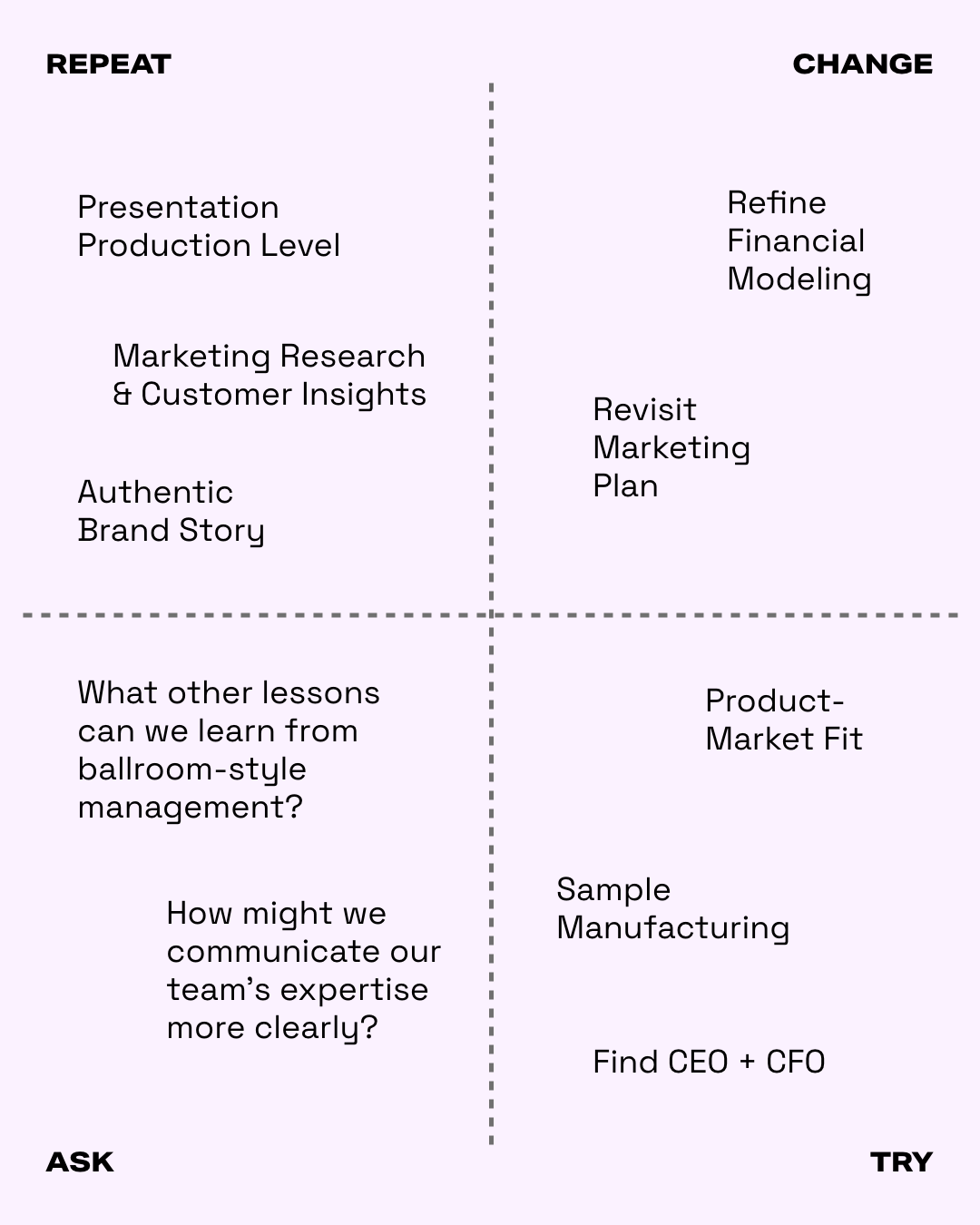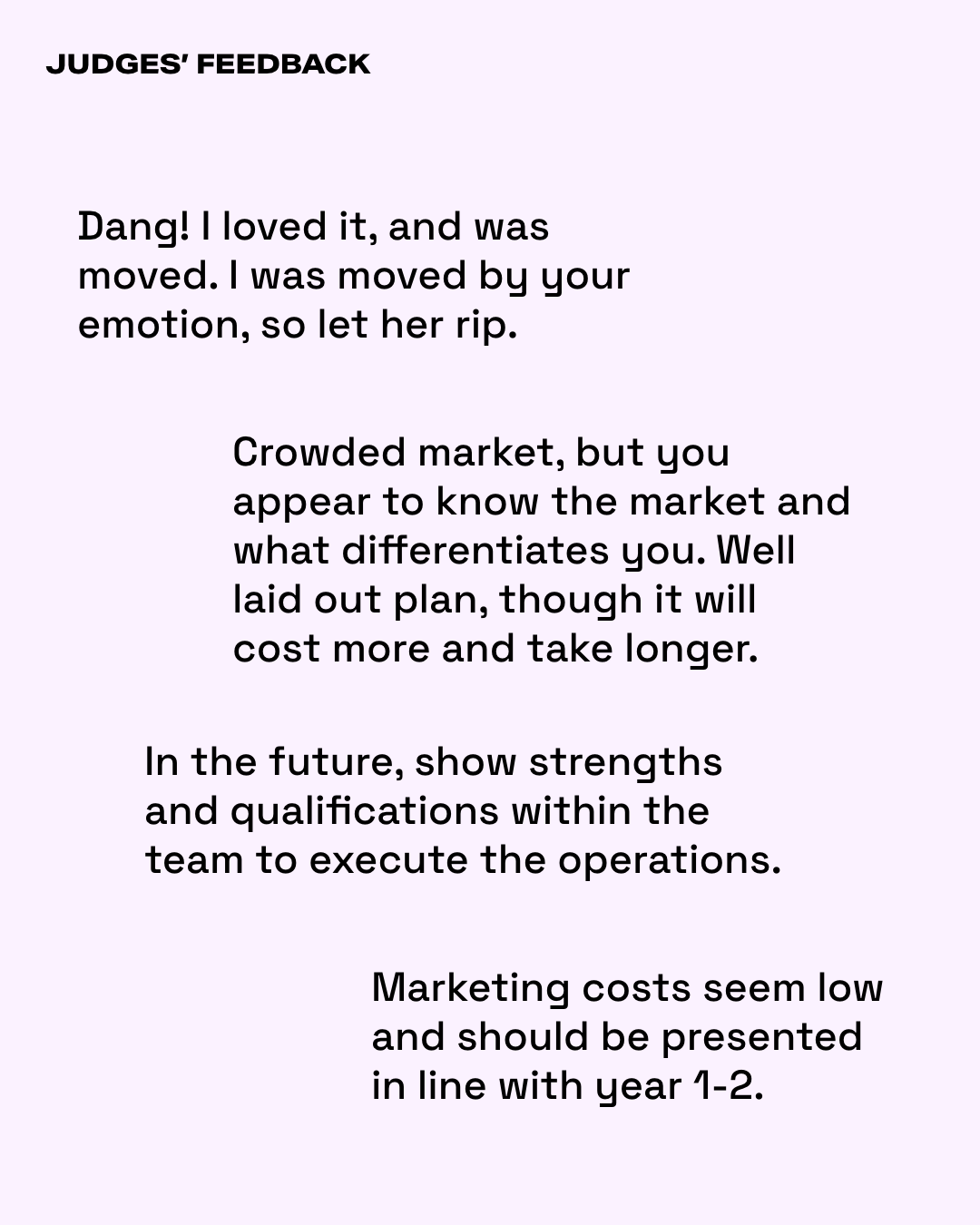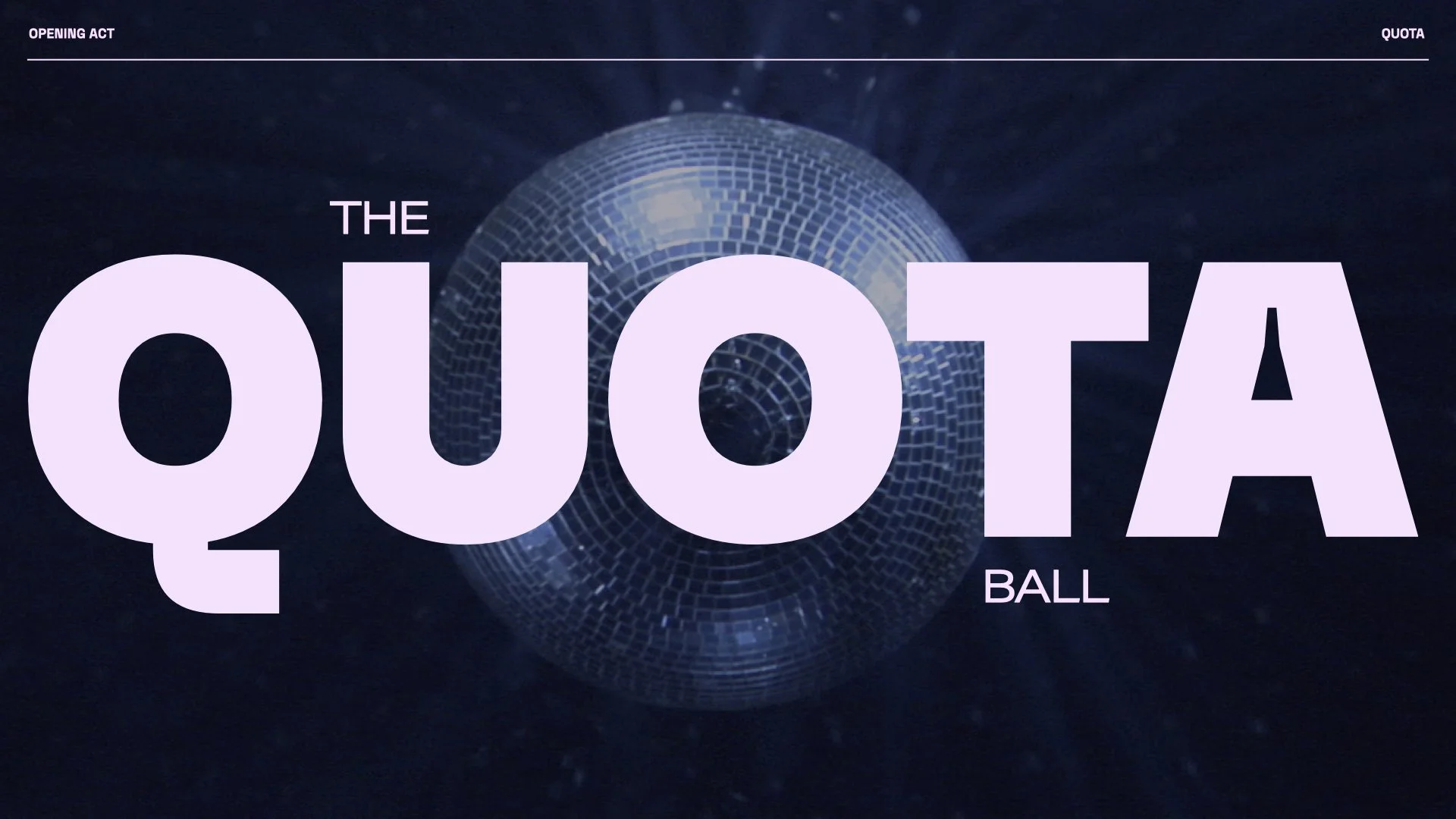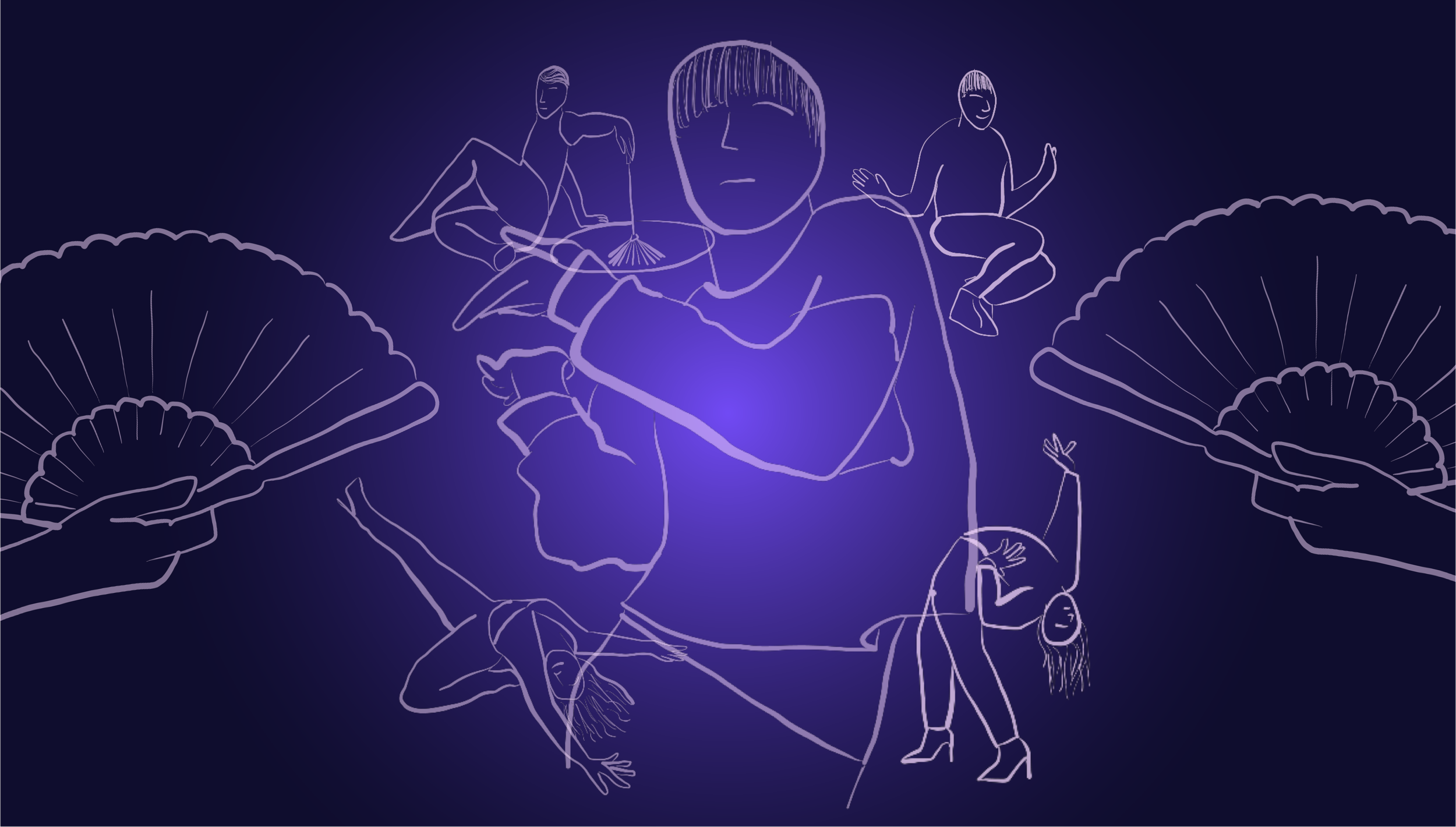
Quota
A Queer Apparel Venture Project
The Brief
For the DMBA Venture Studio capstone, design a business plan for a DTC (direct to consumer) apparel brand that innovates through gender-expansive style and fit.
The Outcome
Early interest from industry partners and collaborators, top marks throughout the semester, and the first-ever standing ovation at REVEAL Venture Showcase.
The Team
Edgar Membreno, Chief Creative Advisor
Ashli Chen-Dong, Chief Product Officer
Eric Tu, Chief Marketing Officer
Tin Dinh, Chief Community Officer
Paul Mendoza, Chief Operating Officer
My Roles
Design Operations, Project Management, Talent Recruitment, Communication Design, Brand Strategy, Design Research, Video Production.
01 :: Draft the Agreement
Prepare to slay.
The DMBA program thrives on collaboration, and we formed many teams throughout our cohort’s two years together. For the final capstone in our program, there was one last team of avengers I knew I had to assemble.
I recruited the queer people of color in our cohort—Edgar, Ashli, Eric, and Tin—to center the queer experience in the world of business.
To foster that connection, we drafted a charter and established north stars that would guide our decision-making process. We knew it wouldn’t be enough to just exist as queer; it was important for us to maintain a queer approach to the work itself.
We quickly learned that fashion was core to all of our queering-of-age stories, and Edgar gave us the clarity and vision we needed to explore the viability of a gender-expansive apparel brand.
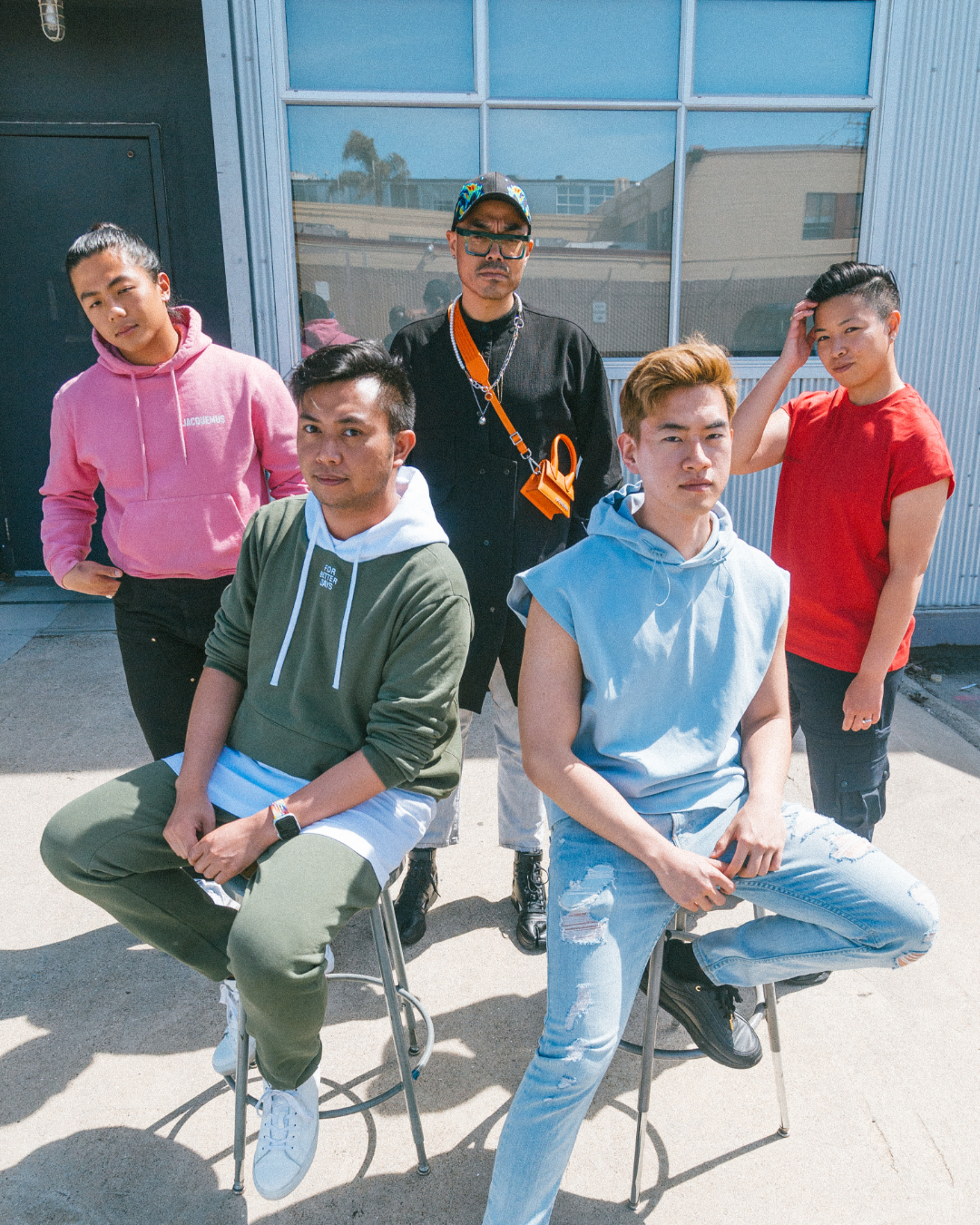
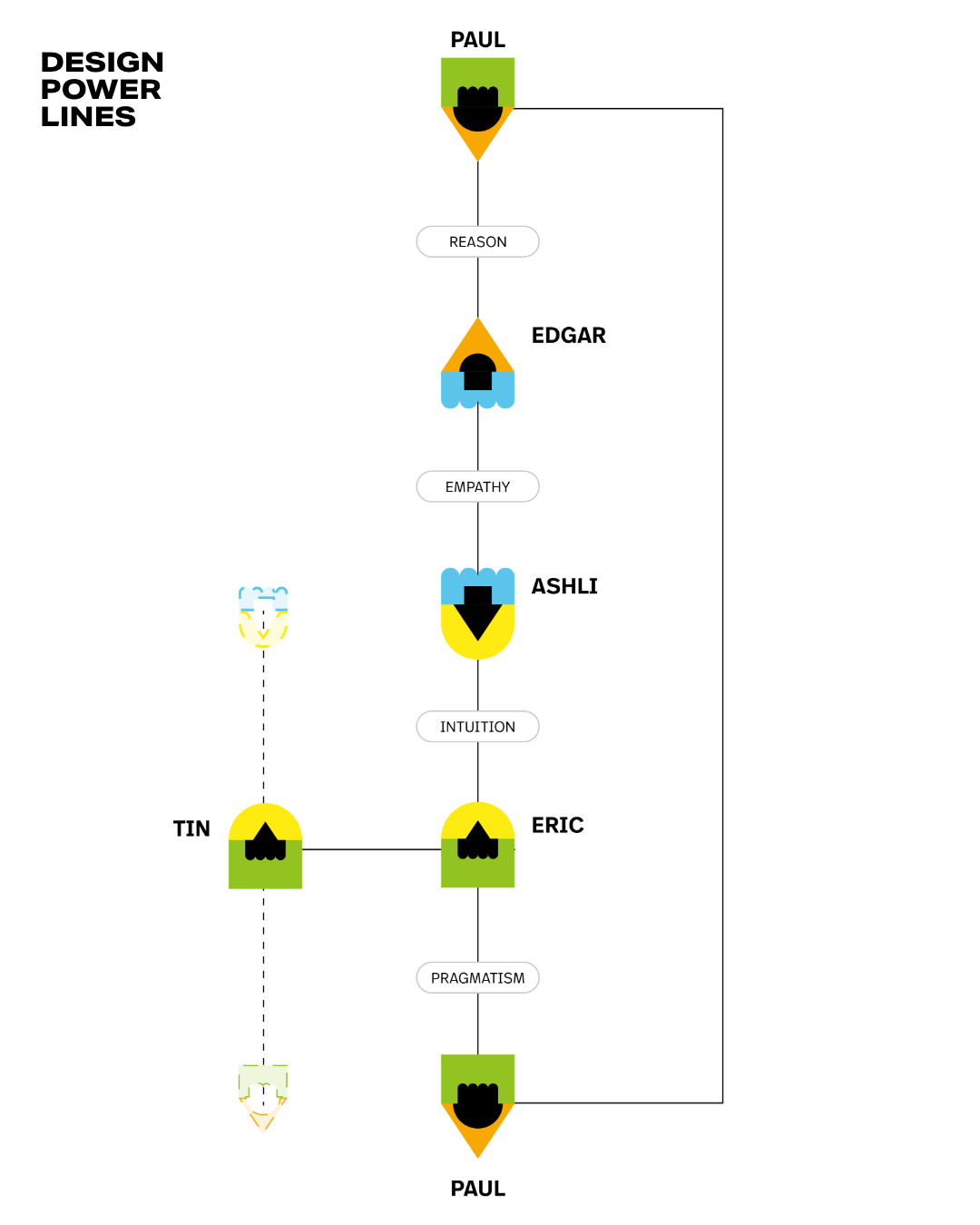

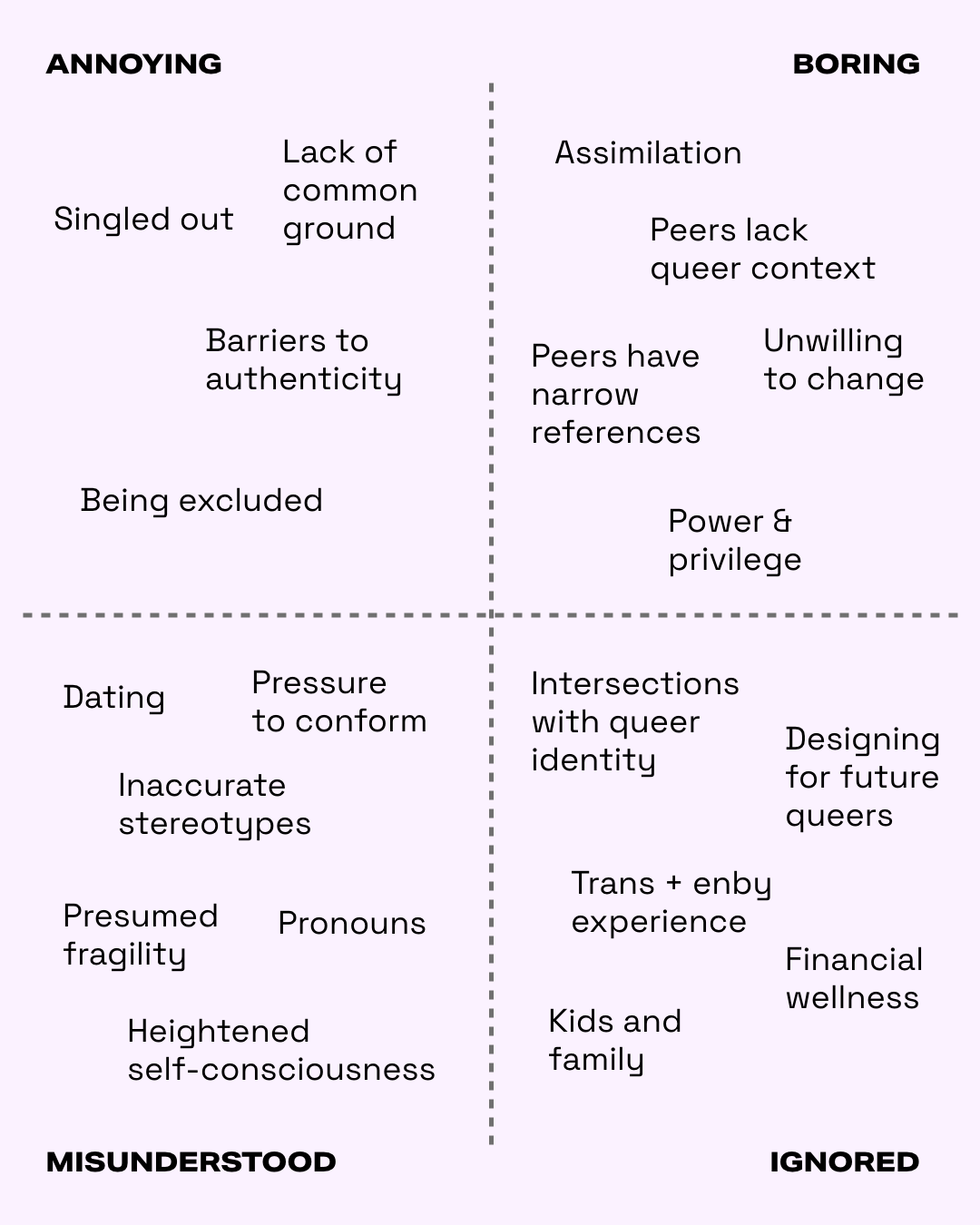
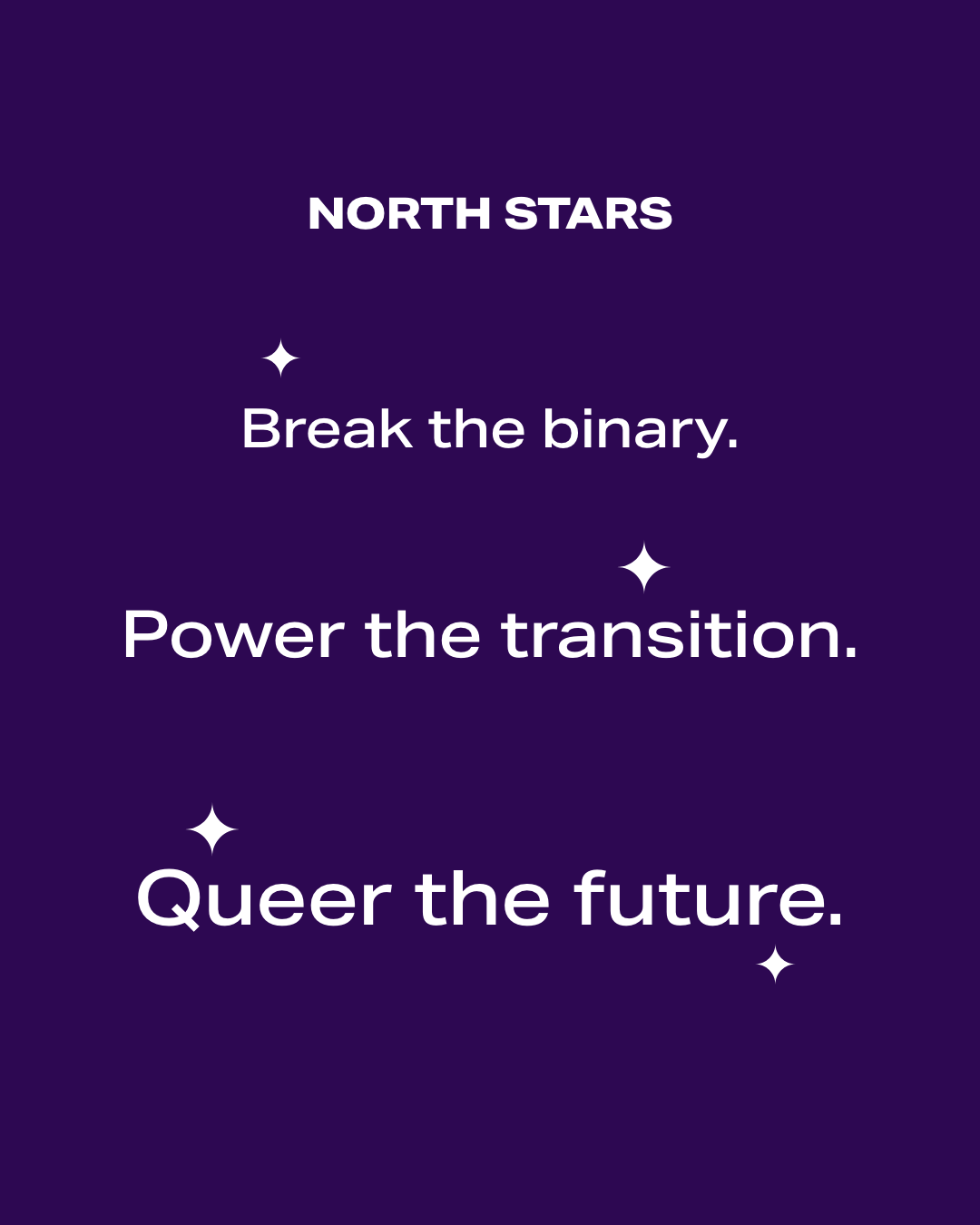
02 :: Discover the Opportunity
A quant/qual kiki.
Ashli, our Head of Research, came through with a pair of survey instruments that allowed us to connect with over 80 members of the North American queer community in just two days.
We conducted in-depth interviews with 17 of those folx to unpack the many triumphs and struggles queer people experience when shopping for clothes. These interviews gave us greater clarity about our competitors’ positioning.
I also kicked off our internal weekly meetings with discussion prompts that ritualized the team’s self-discovery, and I read up on the latest secondary research around queer identity to ground our insights.
(Shout-out to Kelly Reddy-Best from Iowa State for teaching us so much through her oral histories. We stan a scholarly queen.)
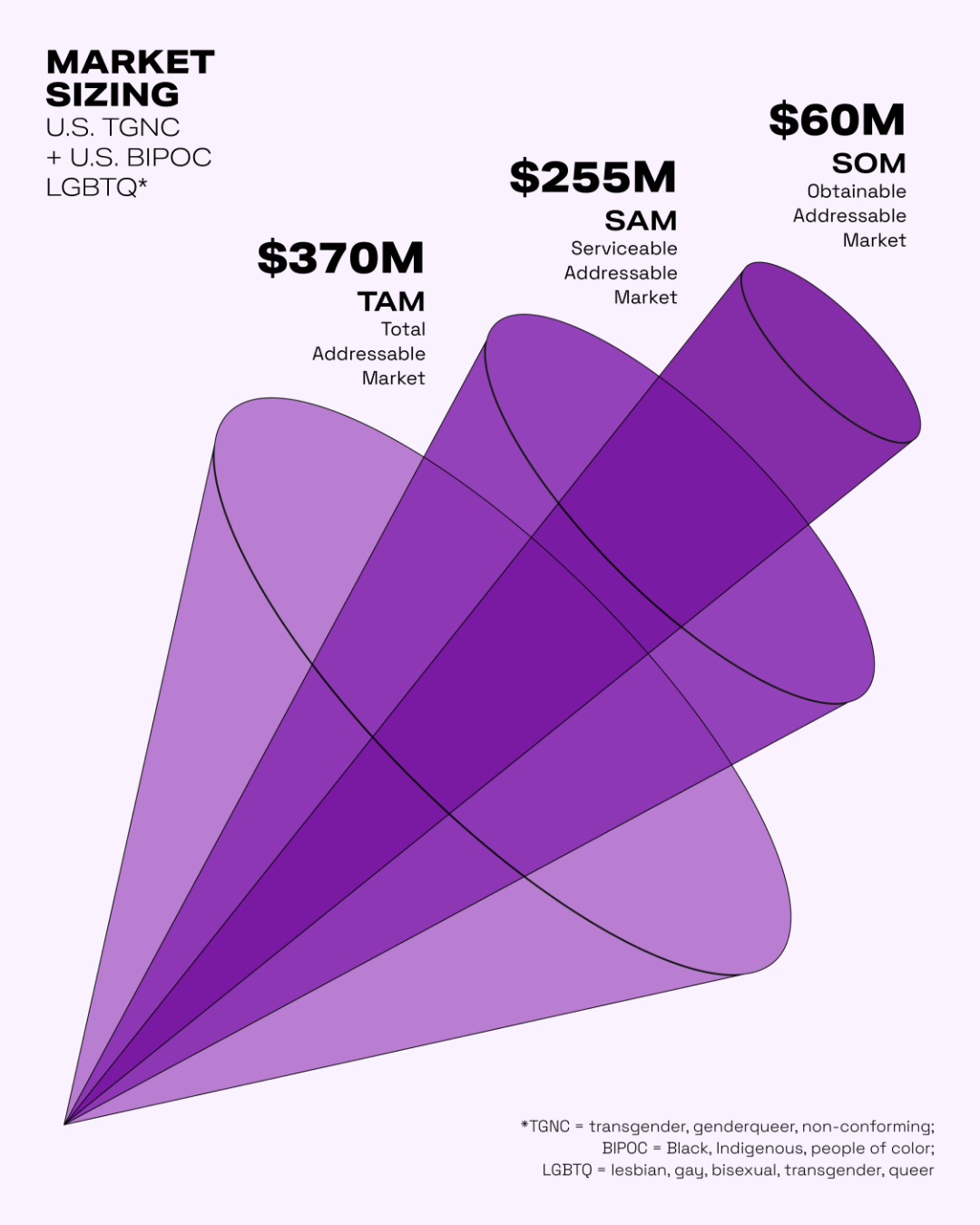
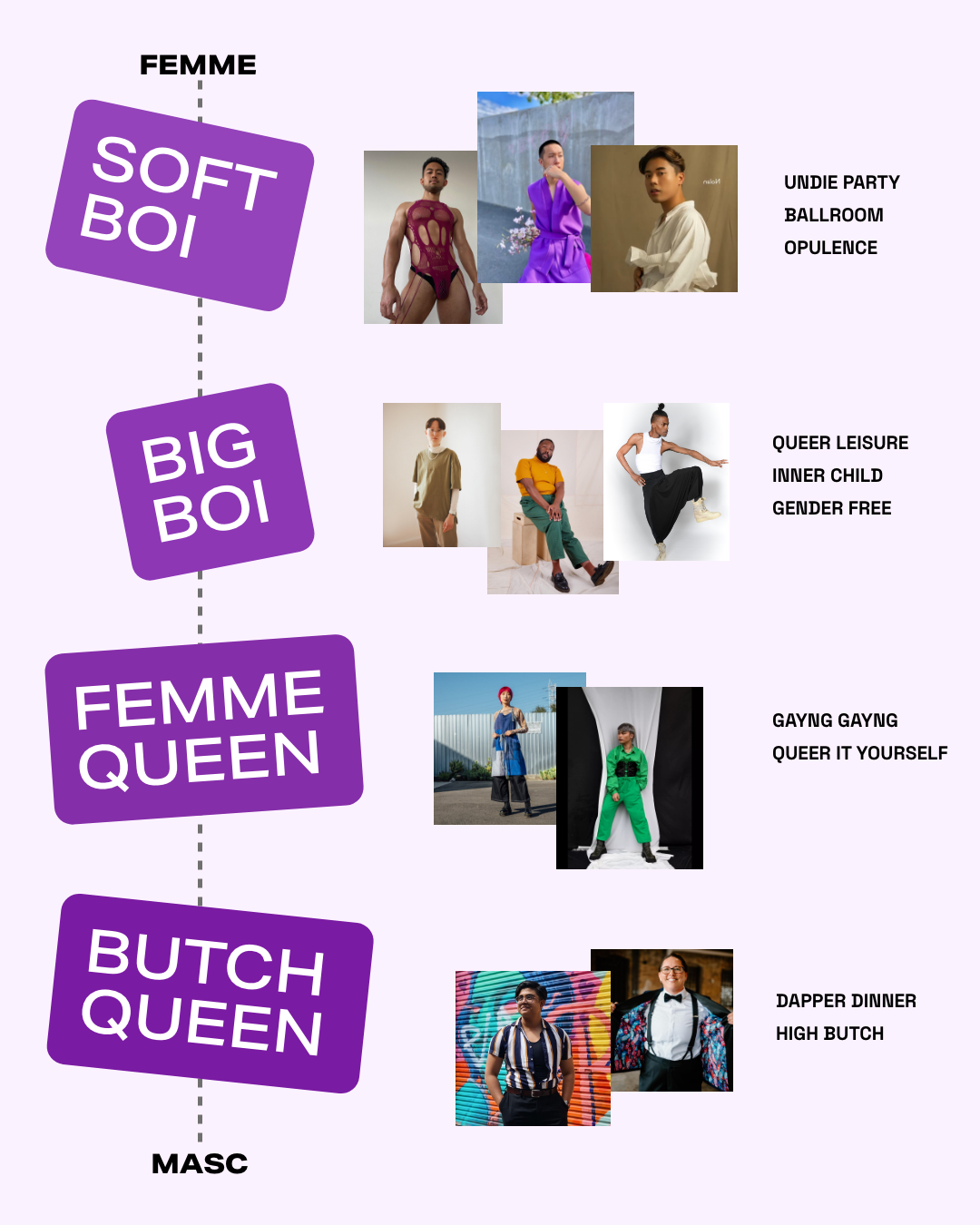
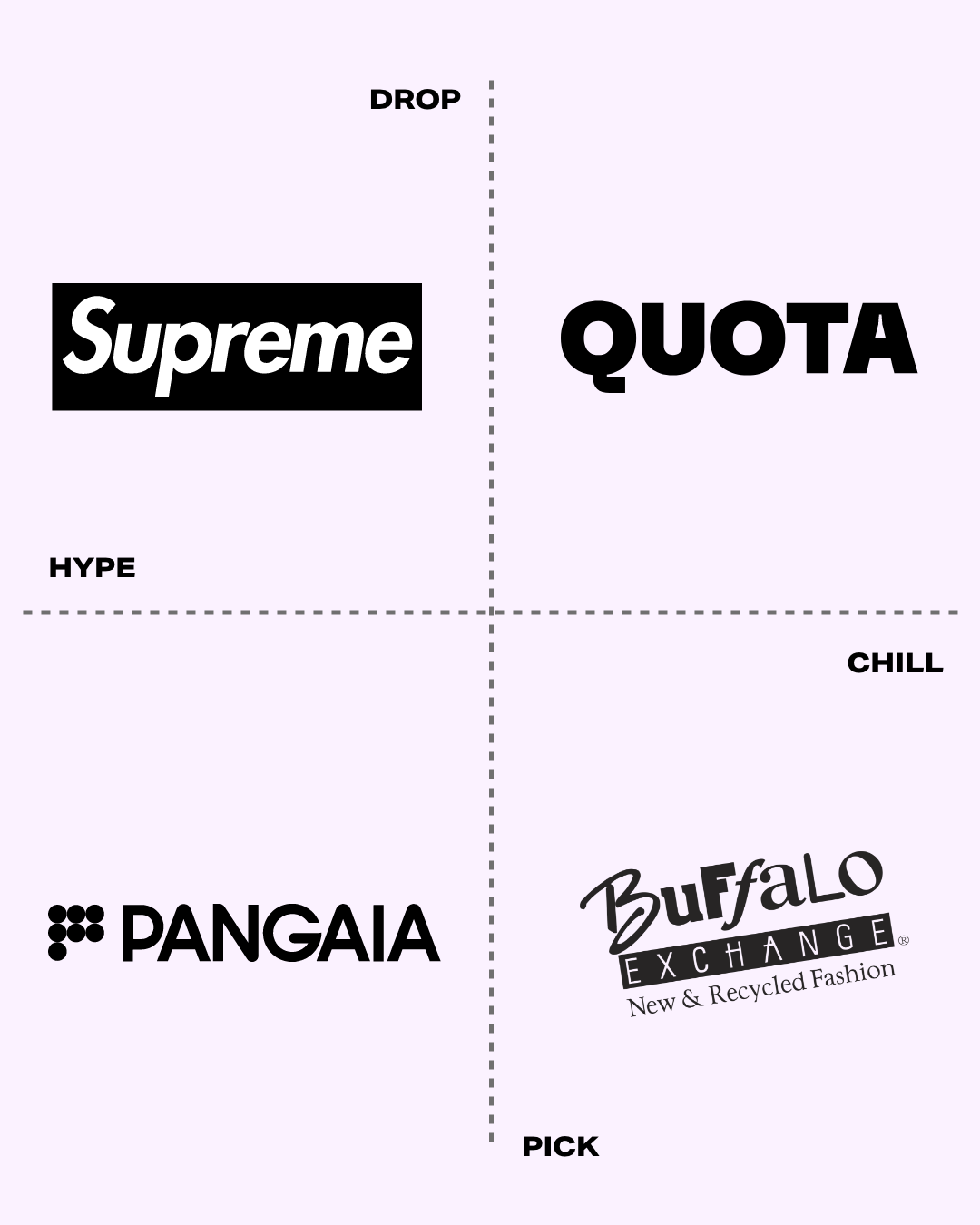
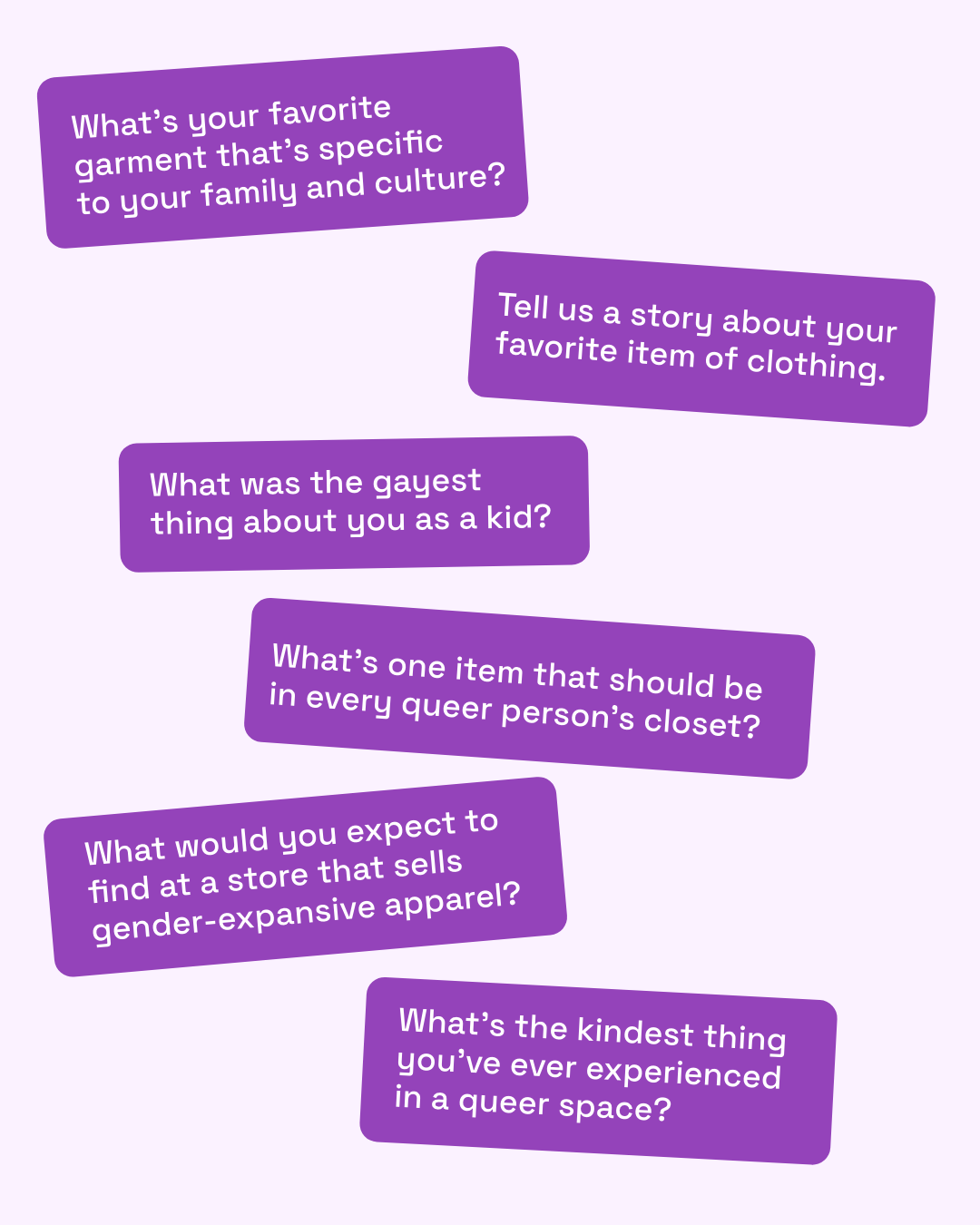
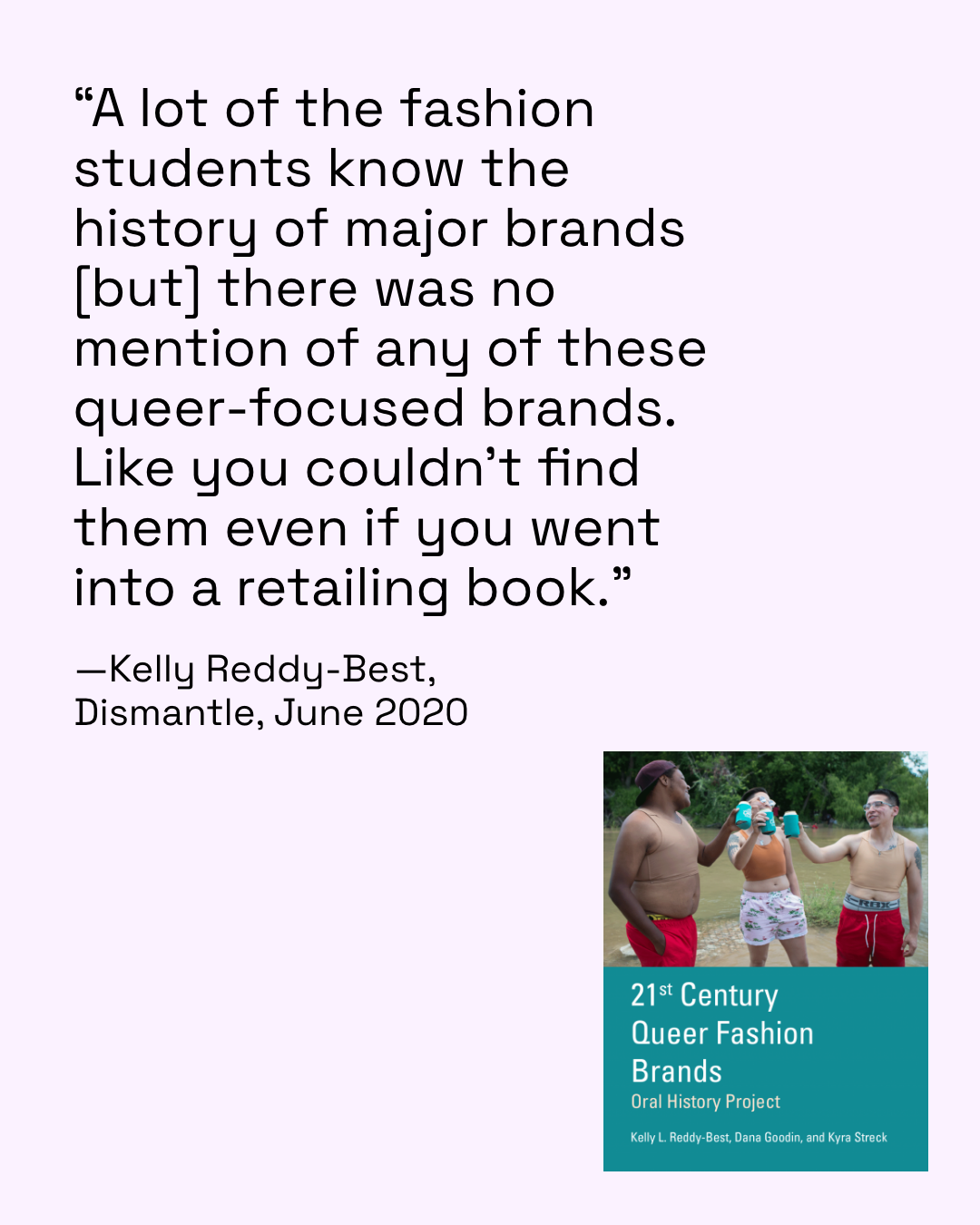
03 :: Define the Strategy
Life is a ball.
Our research showed us that the search for clothes outside of the binary presented its own tension between proper fit and aesthetic freedom, and dressing outside of a normative “category” proved figuratively and physically constraining.
The word “category” became a very significant word for us while building our strategy, as it led us to the vogue femme ballroom scene, the queer subculture that dominates pop culture today.
Ballroom’s history as a vehicle for protest and solidarity in ‘80s-era New York City gave us the queer collective mental model we needed to fulfill our charter and build our business.
Each major project milestone would be approached like a ball, and our apparel product itself would match the unifying rhythm and passionate pace of competitive ballroom.
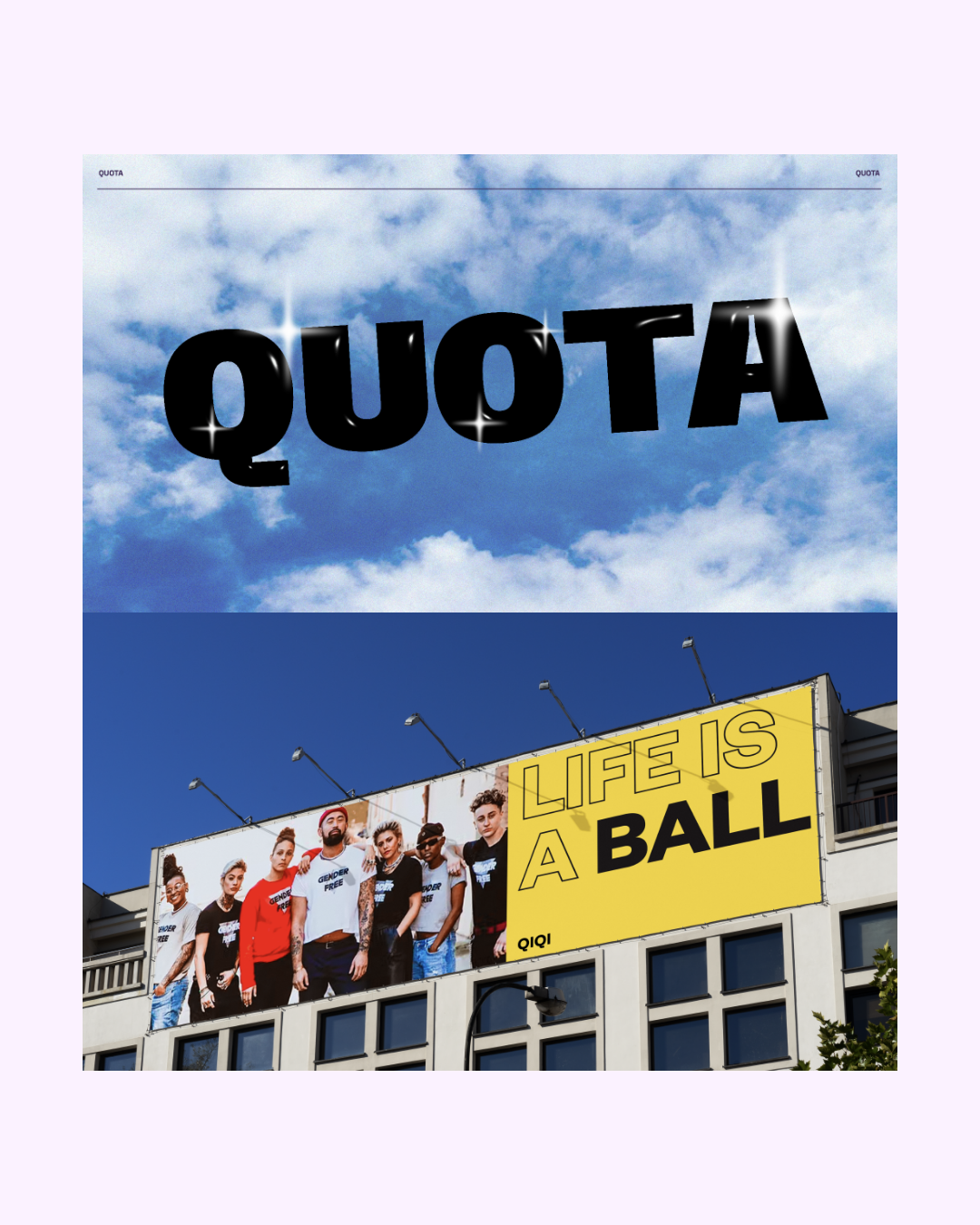


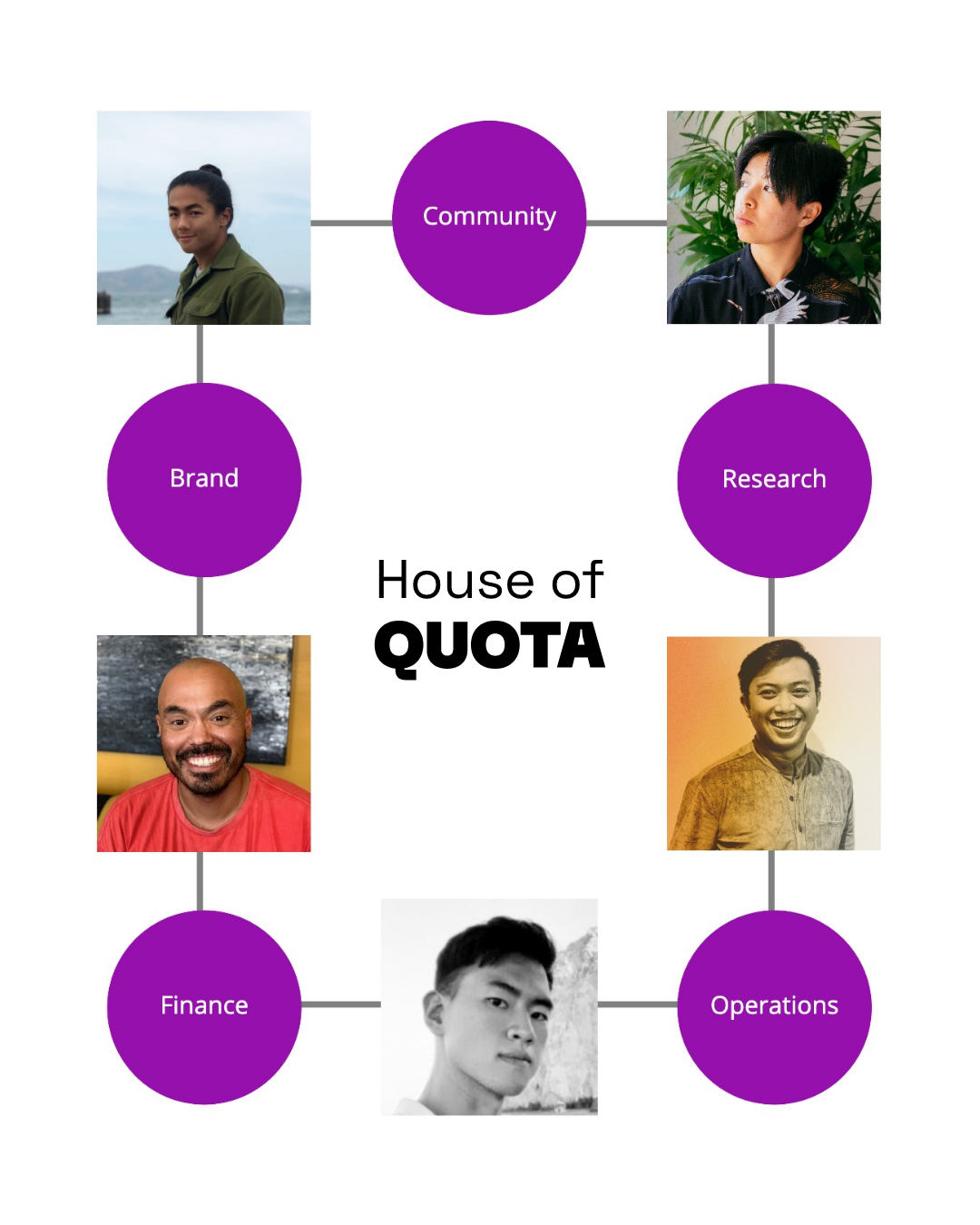
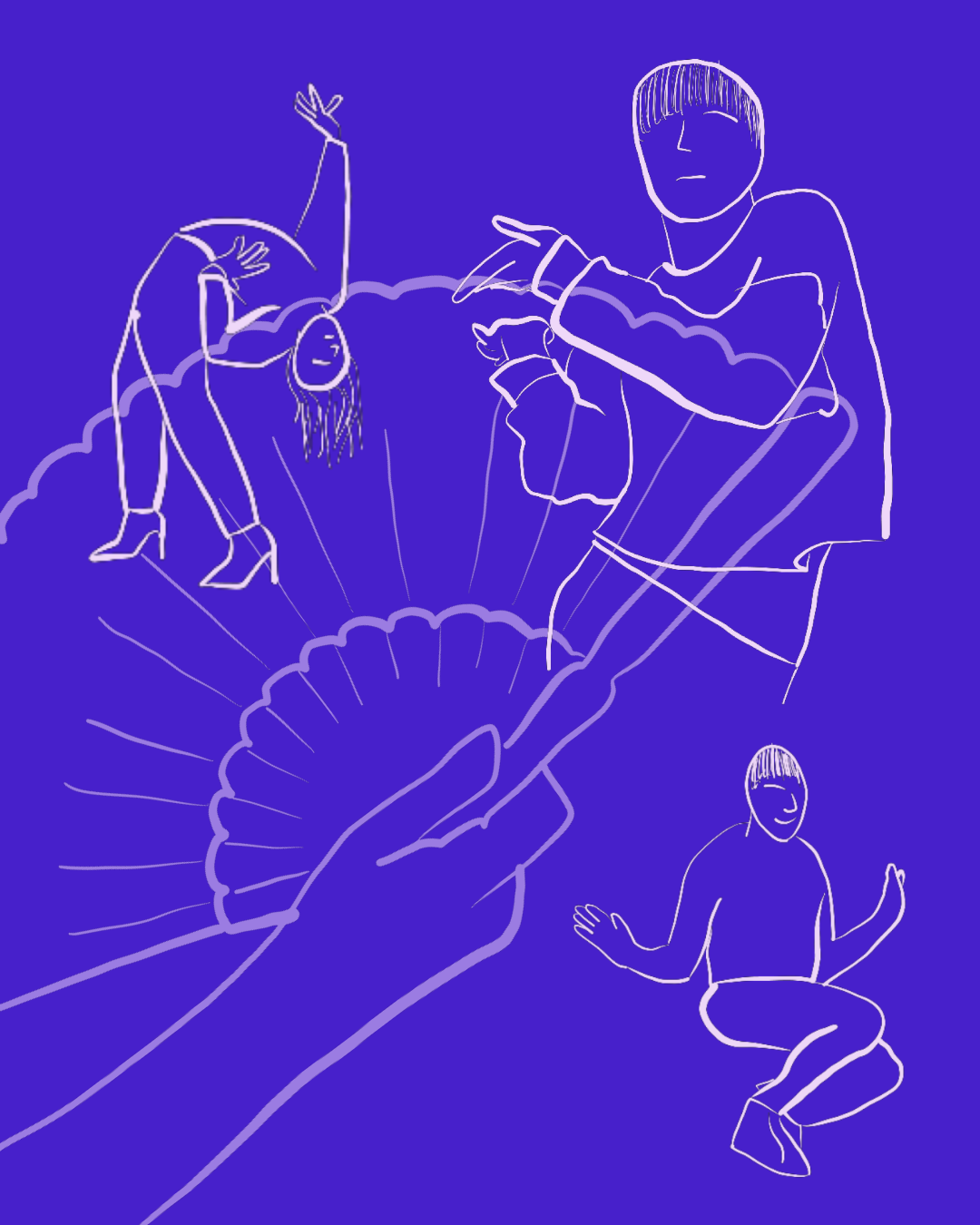
04 :: Develop the Prototypes
Scared money don’t make money.
With our strategy in place, it was time to queer up the prototyping phase of our venture plan. We swapped fake doors and micropilots for financial spreadsheets, product roadmaps, and marketing plans, and we knew we had to be gutsy and brave about our projections.
Eric came through with an elegant and robust finance model and organizational structure that would ensure healthy cash flow and minimal overhead, while Tin’s marketing strategy and visual look and feel ensured that our messaging would be respectful, vibrant, and inclusive.
Edgar and Ashli focused on product development, including early sketches for our first “drop” of clothing. I mapped out the operations plan and product strategy to frame each “drop” like the new issue of a monthly magazine, with each new “drop” highlighting an intersectional queer subculture.
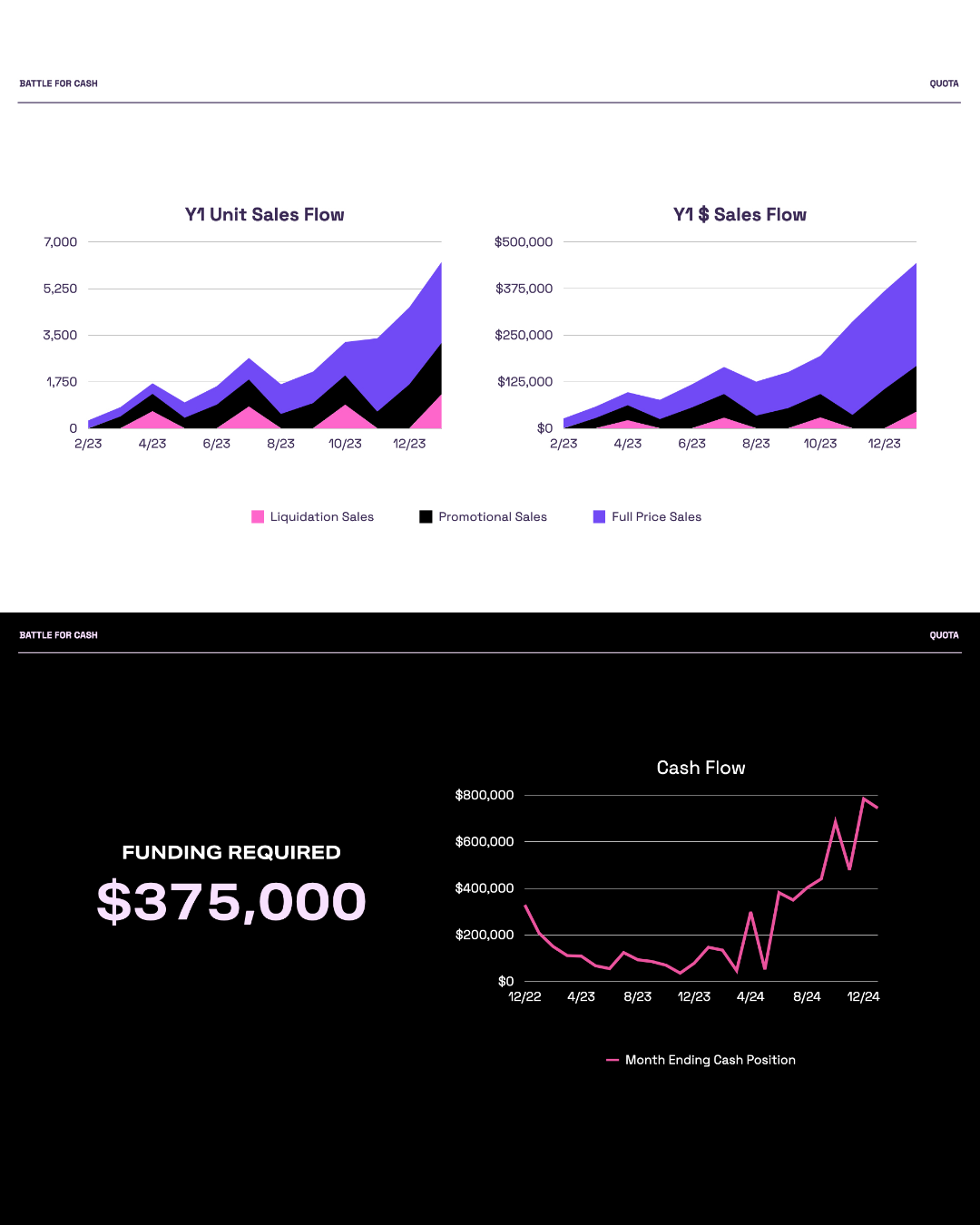
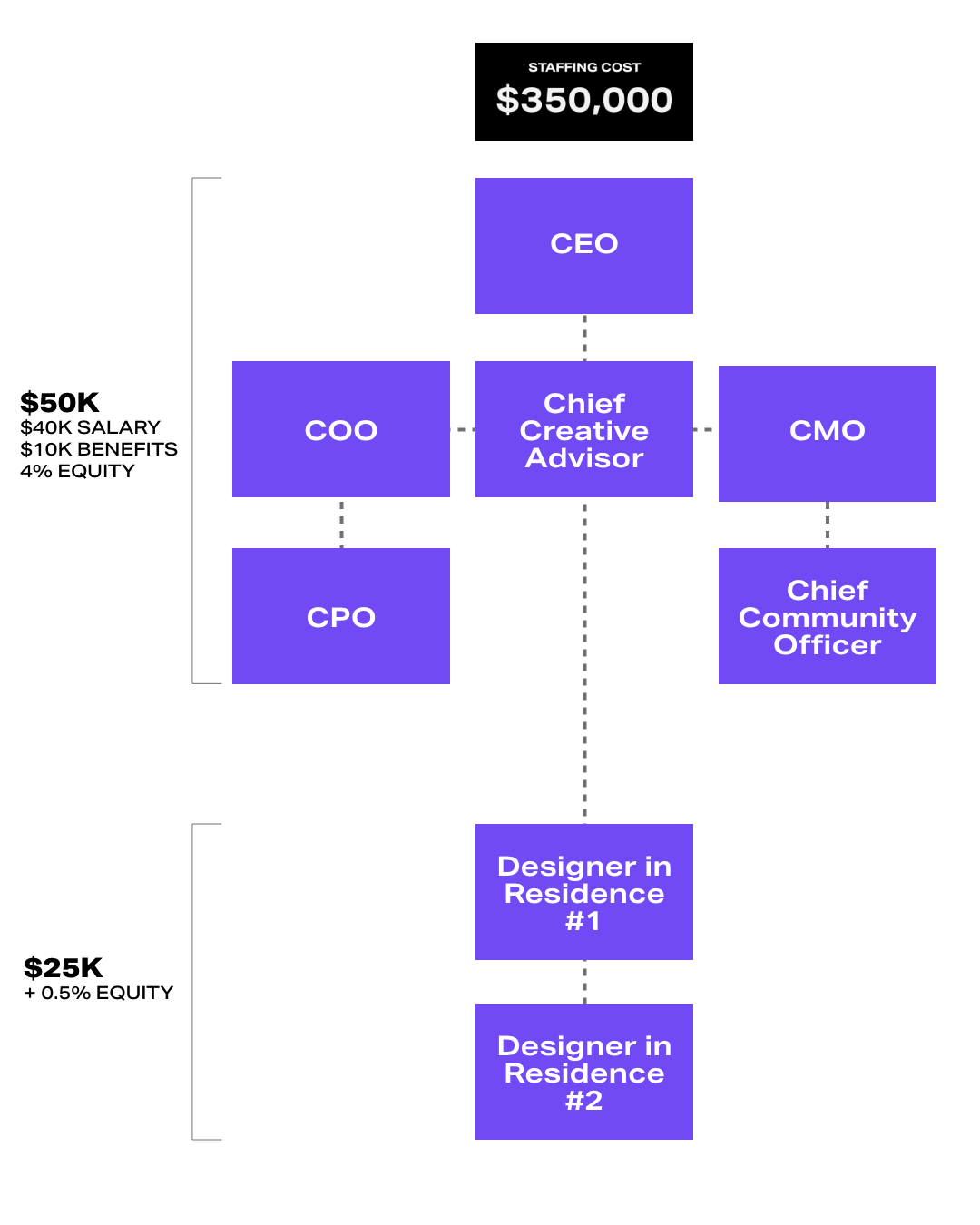
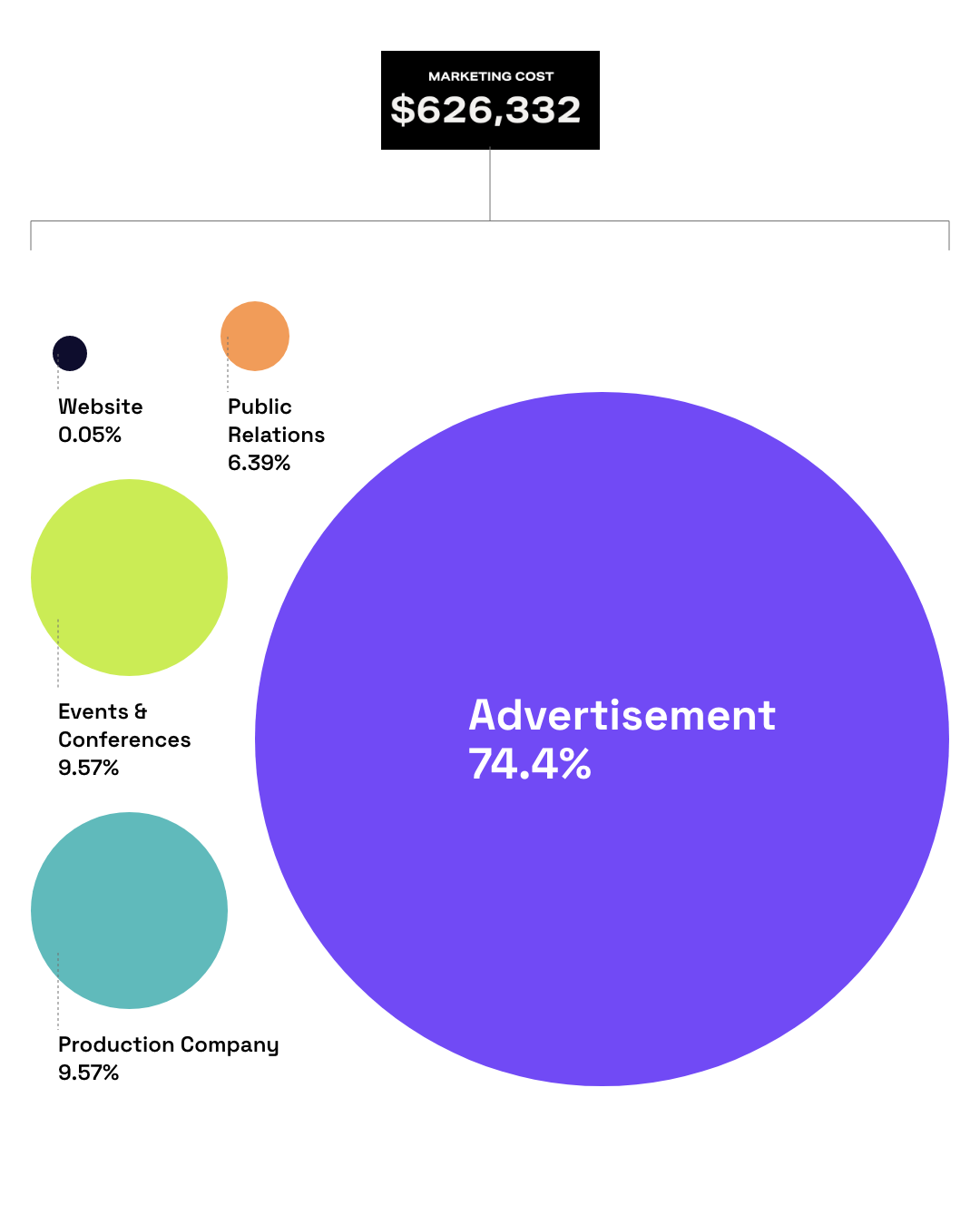
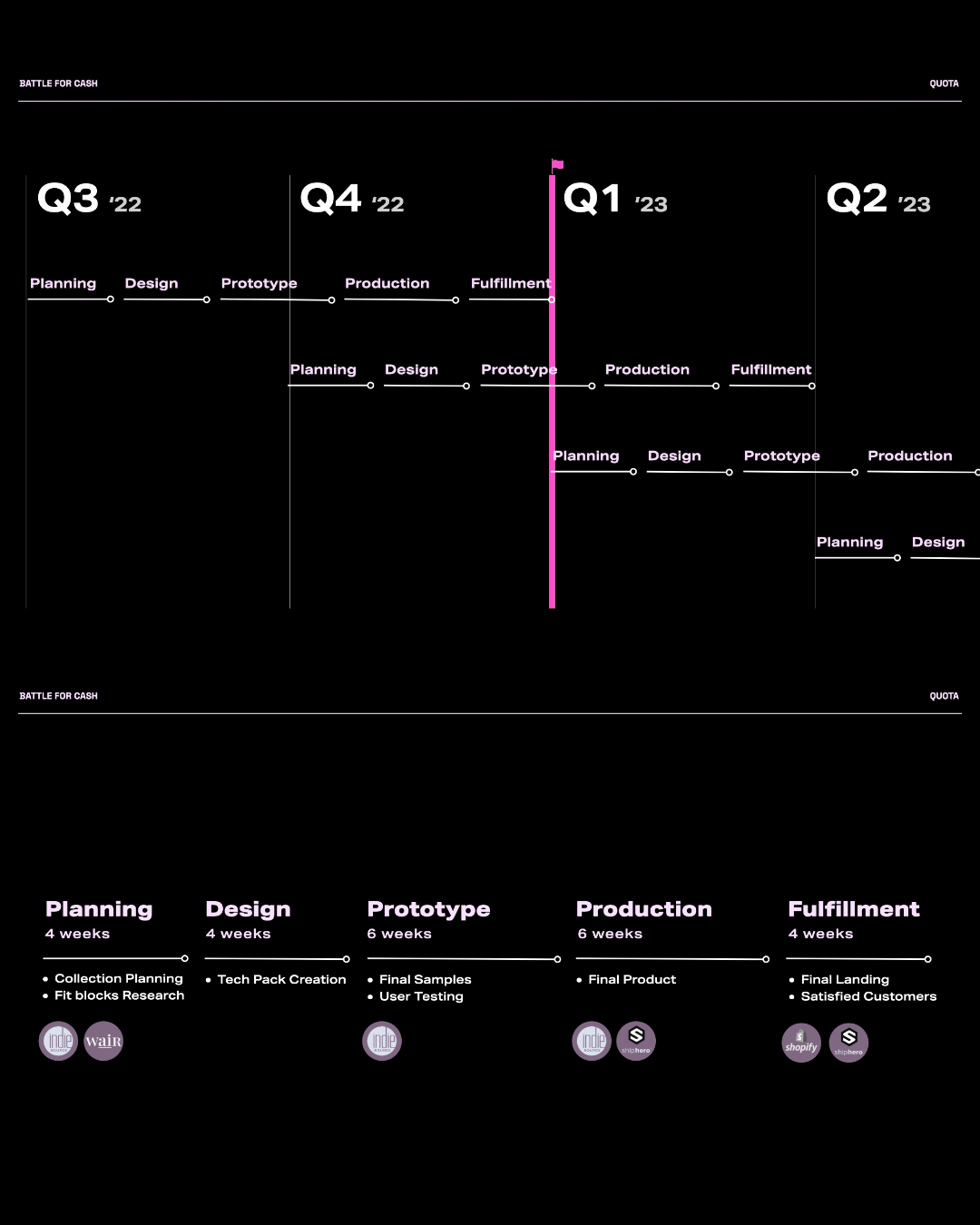
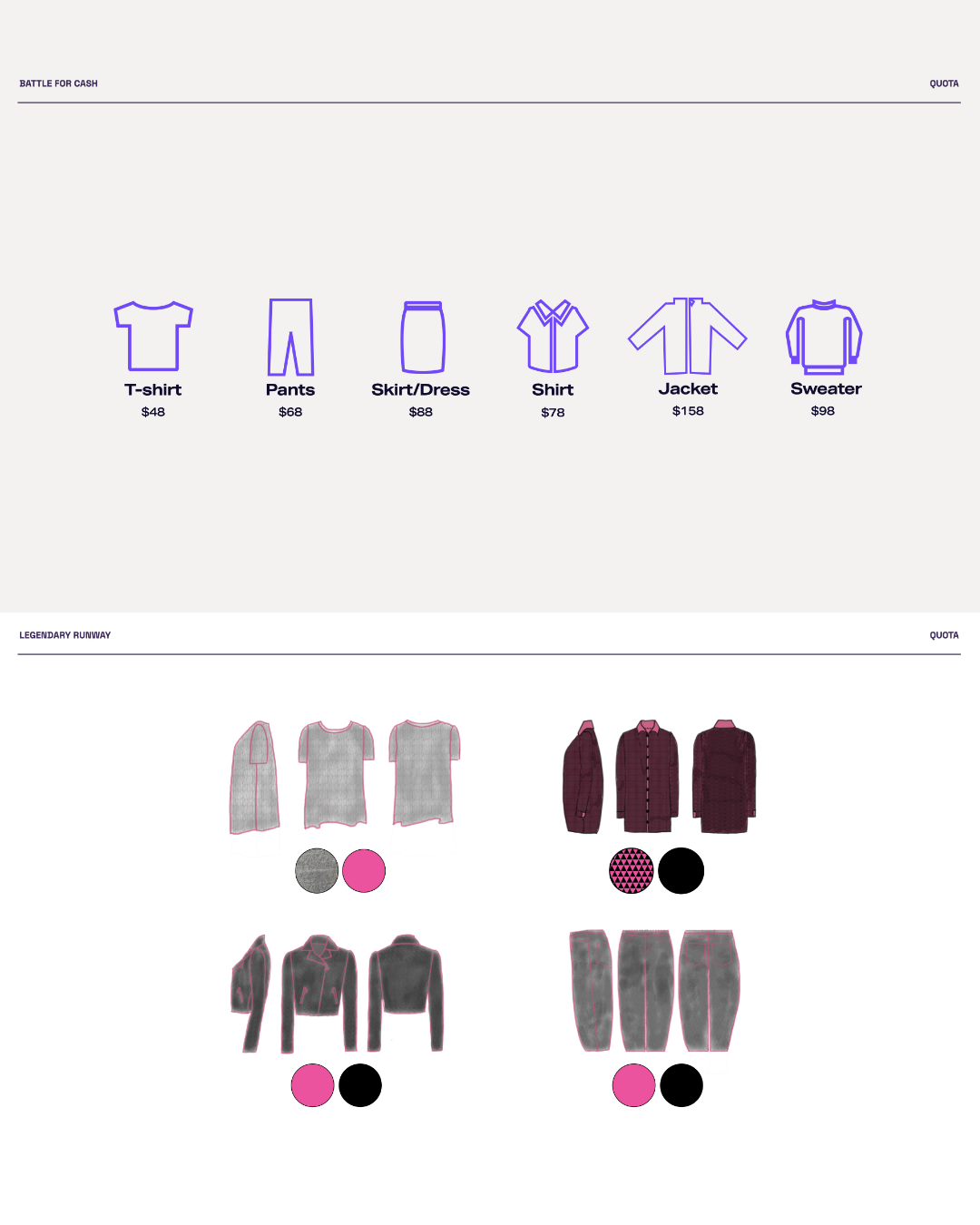
05 :: Deliver the Results
Keynote the house down.
We prided ourselves on our ability to deliver killer presentations at every residency, and we set up our final show as our crowning achievement.
When designing this 30-minute presentation, I came back to our strategy and treated it like a proper ball: a grand march, followed by realness, then a performance battle, and a final runway, all filtered through a strategic design lens.
To support our venture ball, we shipped a 15-page business plan as well as documentation of our legal agreements, our incorporation status, and our verified trademarks.
As a bonus, we collaborated with our brothers in the MFA Design program, Titan Vicencio and Malik Sapp, to create ob_serve, a publication thesis project that highlighted the members of Quota in a 16-page feature spread, “This One’s for the Gworls.”
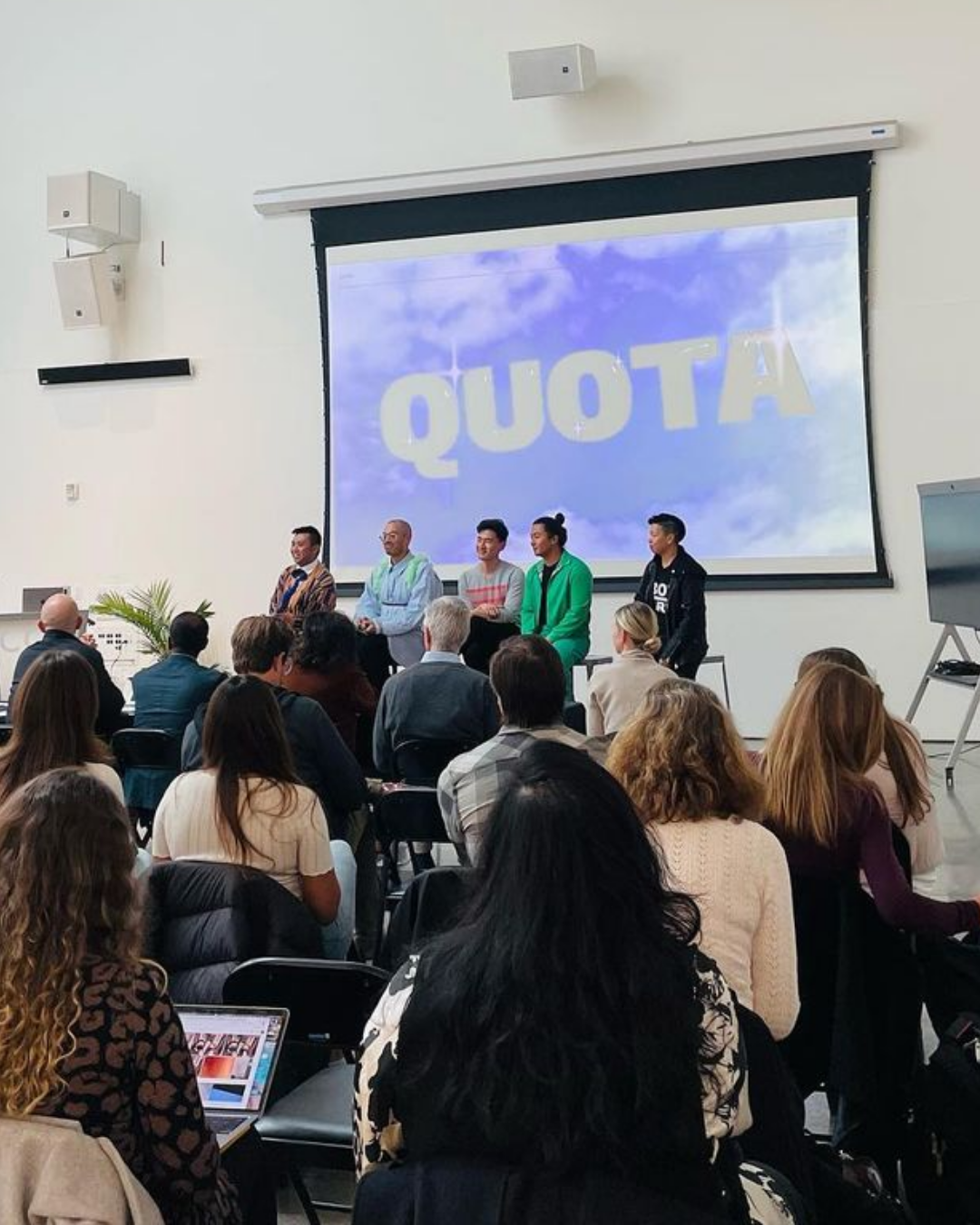
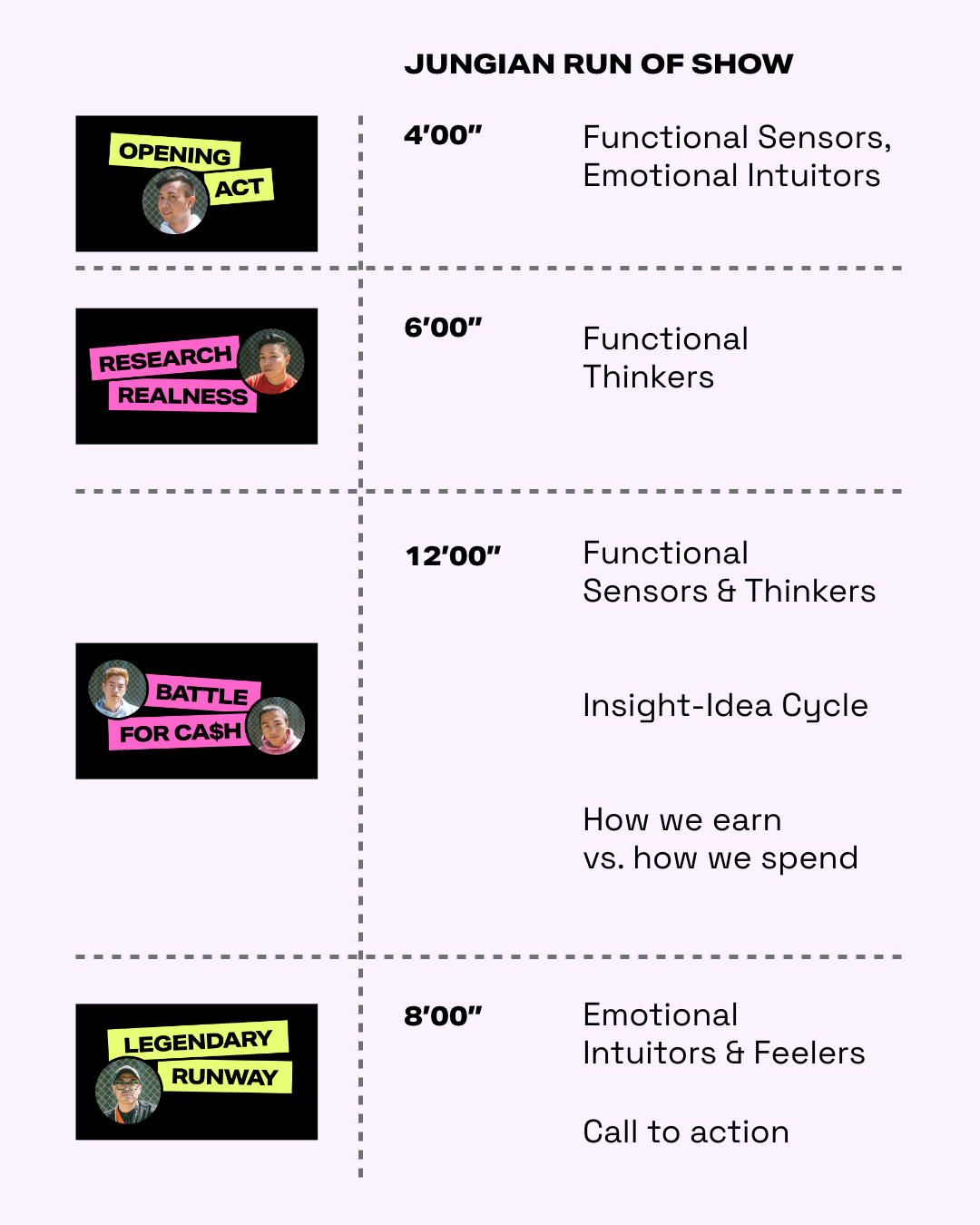
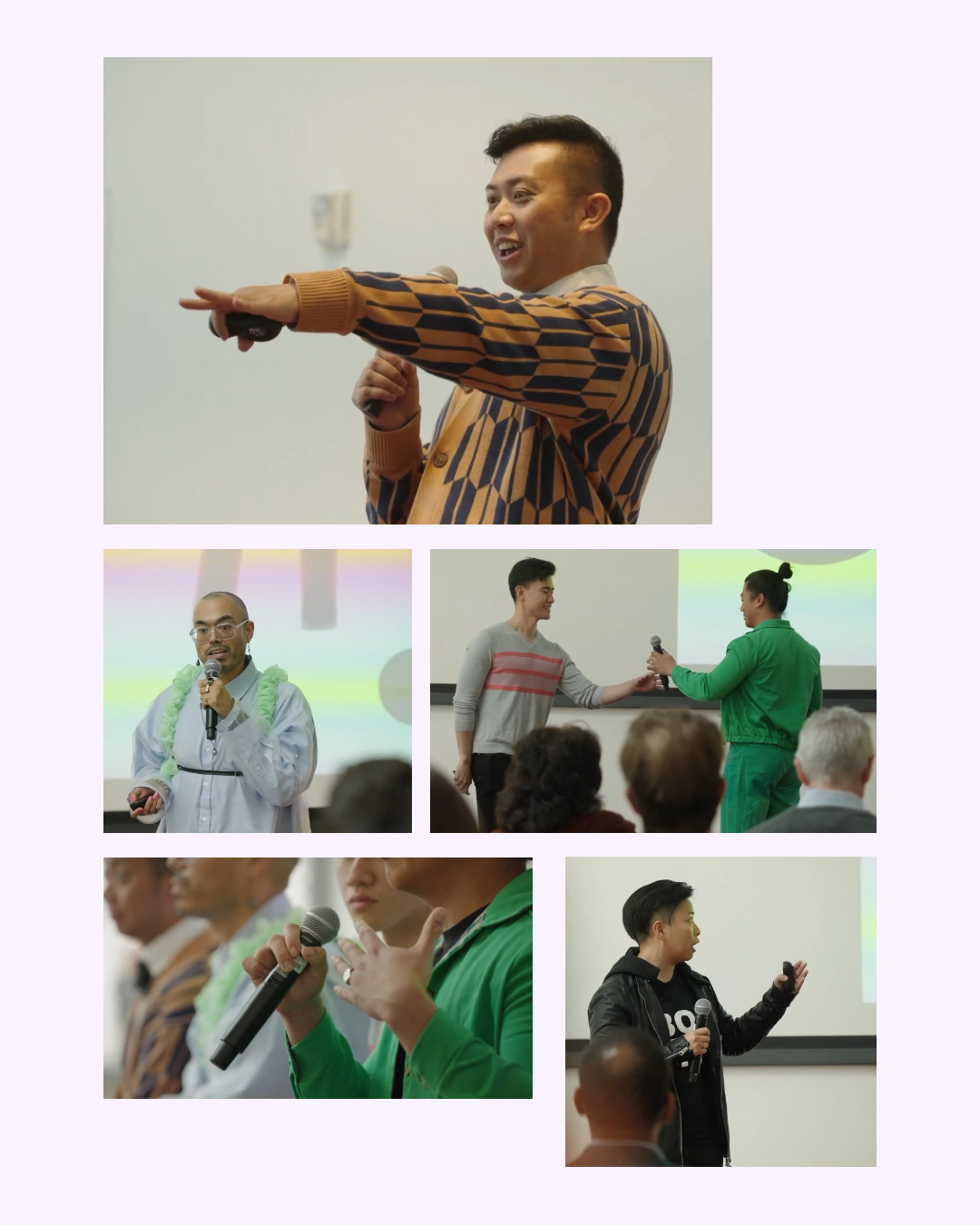

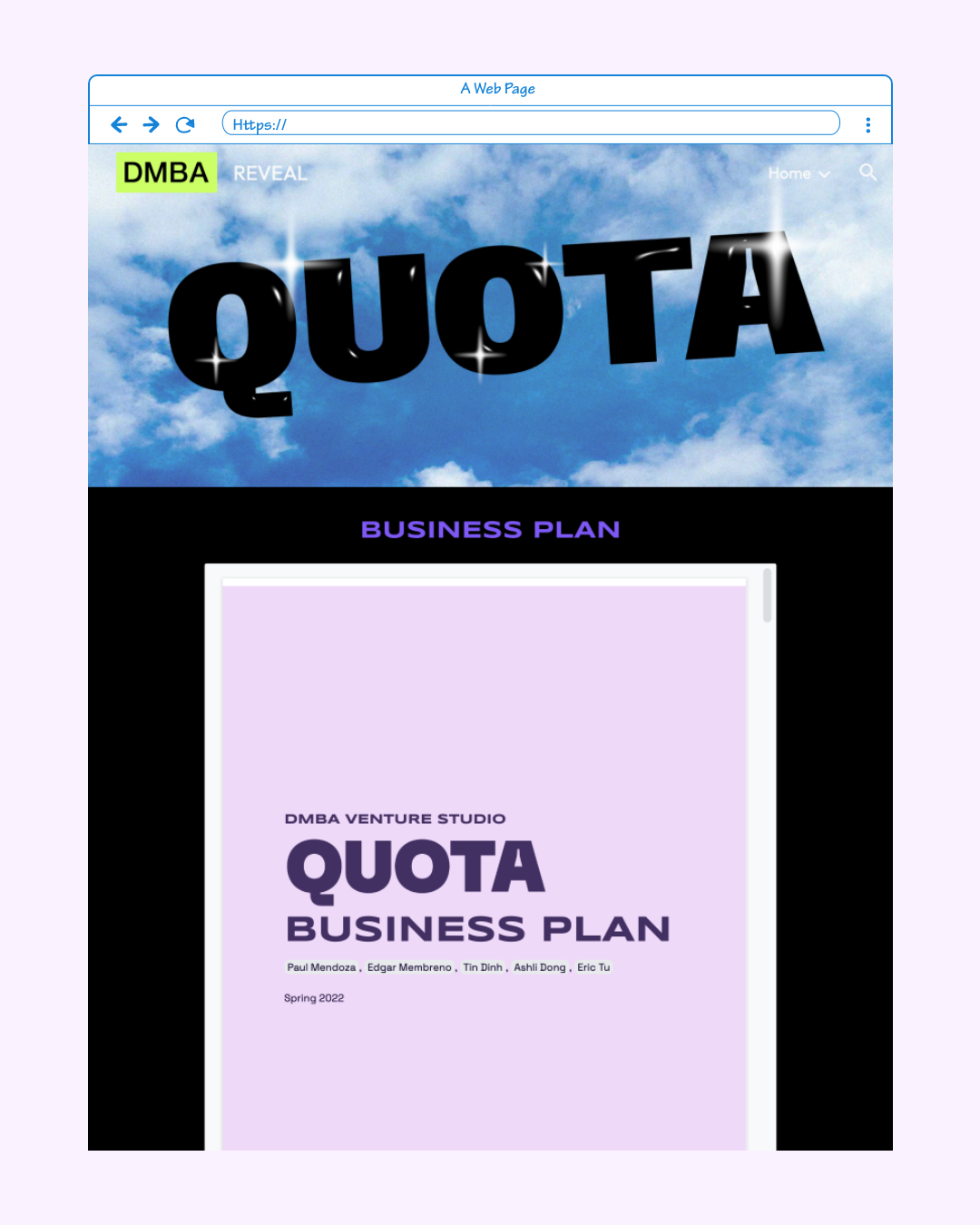
06 :: Debrief the Milestones
Tens across the board.
None of us were really prepared for the standing ovation we received. It felt like we delivered fully on our potential and solidified our reputation as a house of human-centered innovation.
While the feedback on our venture was generally positive, we have more development work ahead of us.
Constructive feedback included the re-evaluation of our marketing plan, more testing of our lean financial model, a proper study of product-market fit, and a search for a CEO/CFO pair who could advocate for our business while we commit ourselves to product.
Ultimately, we came through as victors by standing tall in a venture capital space that was not built for us. We hope more businesses will take on the mantle of breaking binaries and transitioning power to a queer future.
Quota was the creative statement I hoped I would make in my graduate work since day one. I’m proud of my team and everything we accomplished. In the words of Law Roach, we did what needed to be done.
